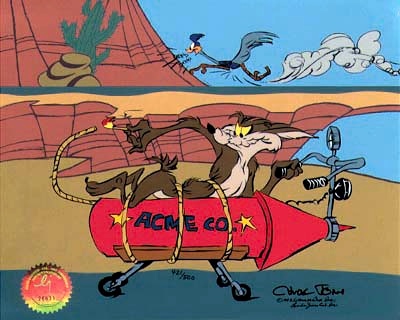 Hmmm...Kristin Chenoweth was certainly a dazzling Cunegonde. I wonder how she would be as Nora!
Hmmm...Kristin Chenoweth was certainly a dazzling Cunegonde. I wonder how she would be as Nora!That said, let's start part 1 of our study guide for the final.
On Monday, we finished discussing Raise the Red Lantern and talked a bit about "Stale Mates" as it shed light on the film. Then I introduced drama/theater and Ibsen's A Doll's House (1879). Remember that drama refers to the written form of the play or the playscript and the playwright's intentions. Theater refers to the performed form of the play, reflecting the director's intentions, the audience, and the director's central idea about the play. The central idea is an especially key concept. Without a central idea, a performance goes all over the place. With a central idea, the play is definitely worth seeing even if you've seen the play before.
We also talked about realism (psychological, individual) vs. naturalism (sociological, group) as well as Raymond Williams' key terms: dominant (present-day and mainstream), emergent (foreshadowing of the future), and residual (remains of the past). For example, in A Doll's House, the role that Nora plays in her marriage reflects the dominant idea of True Womanhood. Mrs. Linden's work for Helmer could be considered emergent as clerical work was not considered to be women's work in 1879. For more information on these terms, see the following link from Arizona State University:
http://www.public.asu.edu/~kheenan/courses/101/fall00/101analysis.htm#DOMINANT,%20RESIDUAL,%20EMERGENT
We also discussed the term anachronism (something that is out of time like a wristwatch on a Roman warrior).
We watched some scenes from two film versions of A Doll's House. Both were from 1973, and I suspect that the central idea for both was to capture the attention of the era's movie audiences. Joseph Losey's film (starring Jane Fonda and David Warner) took liberties with the play in an attempt to make it a better film and help audiences understand what Nora had done. Patrick Garland's film (starring Claire Bloom and Anthony Hopkins) was more faithful to Ibsen even though it did go outside the playscript and show Krogstad with his boys.
I wish that I could have shown this scene! And I wish that there were a still of Jane Fonda at the confectioner's shop.
 I'm afraid that this picture of Parisian macaroons is the best I can do! They certainly look prettier than the half-price kosher macaroons that my husband and I buy after Passover.
I'm afraid that this picture of Parisian macaroons is the best I can do! They certainly look prettier than the half-price kosher macaroons that my husband and I buy after Passover.
On Tuesday, we continued to discuss A Doll's House, and we looked at a few more theatrical versions of the play.
Did you know that A Doll's House was written in Norwegian?
These are a few of the links that we looked at:
First is Mabou Mines' experimental production:
http://www.youtube.com/watch?v=oHn2FxLJOoI
Next is a more traditional British production starring Gillian Anderson and Toby Stephens:
http://www.youtube.com/watch?v=w9IU5yvIKkQ
Here is a link to Ingmar Bergman's adaptation set in the 1950s:
http://www.youtube.com/watch?v=Hb3CIsynKa4


 For a review of the Mabou Mines production, follow this link:
For a review of the Mabou Mines production, follow this link:http://theater2.nytimes.com/mem/theater/treview.html?res=950CE4D7103BF937A15752C1A9659C8B63
Here is the Gothamist's interview with director Lee Breuer. He explains the reasons behind his casting of very tall women and very short men, and then he talks about audiences' responses to this casting:
http://gothamist.com/2009/02/27/director_lee_breuer_mabou_mines_dol.php
For reviews of the production starring Gillian Anderson, see these links:
http://www.telegraph.co.uk/culture/culturecritics/charlesspencer/5354252/A-Dolls-House-at-the-Donmar-Warehouse---review.html
http://www.guardian.co.uk/stage/2009/may/24/theatre-review
I can't find a review of The Hunger Artists' version.

Wednesday we watched Act 3 of Patrick Garland's version of A Doll's House. Weren't Anthony Hopkins and Claire Bloom amazing!

We also talked about applying stages of moral development to the characters in A Doll's House.
For more information about Carol Gilligan's theory of women's moral development, see this link:
http://www.slideshare.net/drburwell/carol-gilligan
(It's actually a PowerPoint presentation that you may download.)
For more information about Lawrence Kohlberg's theory, see this link:
http://faculty.plts.edu/gpence/html/kohlberg.htm
And here is a link to my Multiply entry on A Doll's House with many pictures:
http://worldlit2.multiply.com/journal/item/20/A_Dolls_House_More_Pictures
As we finish up our quick unit on drama, remember Avery Brooks' comparison:
films tell stories; theater is a place to explore ideas
Below is a scene from Oregon State University's production of A Doll's House. Yes, yes, yes, it is set in the 1950s.

Thursday we discussed the French author Voltaire's satire, Candide (1759). Candide is very much a product of the Enlightenment or the Age of Reason (1649-1789), a time when philosophers, scientists, and writers began to question authority and received wisdom. Keep in mind that, though, that the French king was an absolute monarch and that people still believed in the divine right of kings there. (Voltaire's king was Louis XIV.) A satire not only holds up a mirror to nature and indicates problems in society but also proposes a solution. (What did you make of Voltaire's solution in chapter 30?) Satires may take various forms. Candide is the story of a picaro who wanders around the world and has a series of adventures. Some other satires are Gulliver's Travels (in the form of a travel narrative) or The Colbert Report (in the form of a right-wing commentator's show).
 For more about the Colbert Report, see this link:
For more about the Colbert Report, see this link:http://www.colbertnation.com/home
To get an idea of the picaro, here is a video from My Name Is Earl:
http://www.youtube.com/watch?v=bYlhCFNRRXg
Or you may find that Candide is more like Wile E. Coyote.
http://www.youtube.com/watch?v=TYTWnjFqTDk
http://www.youtube.com/watch?v=jfAlyLNBG5Y

Finally, here are some YouTube videos of Kristin Chenoweth as Cunegonde. The first is her performance of "Glitter and Be Gay."
http://www.youtube.com/watch?v=MWzewHTcHew
The next is her performance of "You Were Dead You Know," a duet with Candide:
http://www.youtube.com/watch?v=ImlvydPgfBg
No comments:
Post a Comment